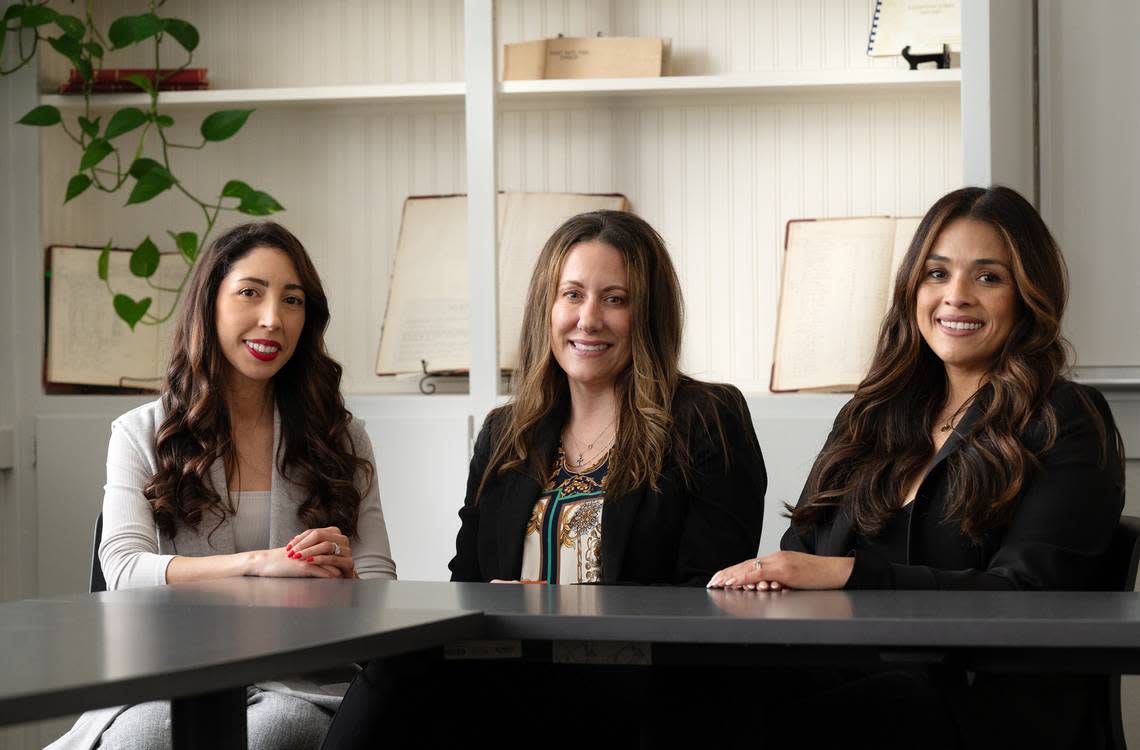English learner students with special needs in Stanislaus face challenges amid teacher shortages

Some students grapple with special needs. Others navigate learning English as a second language. And some deal with both, in a time when teacher shortages in special education are exacerbating their plight.
Since 2015, the number of special education teacher vacancies in Stanislaus County has increased 42%.
This past school year, the county experienced more vacancies in special education and self-contained classes (smaller classes for students with special needs) than in any other subject, accounting for 61% of all vacant positions, according to the California Department of Education. Most districts, however, have been able to fill these positions before the school year.
In the 1980s and ‘90s, there was robust federal and state funding to create the bilingual teacher workforce of today, said Gliset Morales, an associate professor in the Exceptional Education Department at SUNY Buffalo State University.
However, those teachers are now retiring, all that funding has dried up and there haven’t been new cohorts coming in, Morales said. “We are truly in crisis mode right now.”
Modesto City Schools has 1,095 students with disabilities who also are English learners. Of those students, 460 are in elementary school, while 635 are in junior high and high school Although the district has experienced shortages in the past, it’s been able to fill positions for the special education department.
Turlock Unified School District has found special education teacher positions the most challenging to fill. However, TUSD has been working closely with local colleges and universities, such as CSU Stanislaus and UC Merced, to fill these positions with fully credentialed teachers, according to district spokeswoman Marie Russell.
In September, Analisse Sonia and her children moved to Turlock from Mexico. Despite her 5-year-old son being diagnosed with autism, he was initially placed in a general education class.
Sonia’s son, whose native language is Spanish, struggled to communicate with his teachers, causing him anxiety. Sonia recalled an incident where he put magnets in his mouth out of frustration during class.
Due to his autism diagnosis paperwork being from Mexico, it took three months before he could undergo evaluation for placement in a special education class.
Sonia said the problem lies in that there are not enough staff who speak Spanish to be able to help her two Spanish-speaking children, especially her son, who is particularly vulnerable.
“There wasn’t a day that I wasn’t worried for my son,” she said, through a translator.
Misassigning English learner students
Morales noted a common occurrence nationwide of misdiagnosing English learner students as having special needs.
Misplacement of English learner students in special education can lead to academic setbacks, she said. There’s a pressing need for educators and professionals to discern between language disparities and genuine learning disorders, because many characteristics overlap.
Misidentification can result in English learner students being placed in special education settings when it’s unwarranted, leading to academic regression as special education services take precedence.
“The thought is they’re struggling because they have a disability, but maybe they’re struggling because they’re in the wrong setting,” Morales said.
At TUSD, a multidisciplinary “Student Study Team” determines if a child’s academic challenges stem from a disability or a language barrier, and if a referral for special education assessment is warranted.
The student’s primary language is identified before any special education assessment. Then the assessment is conducted in that language.
At Modesto City Schools, the district starts with an assessment plan and compares the student’s primary language, to determine if the issue is language, disability or both.
“We’re not considering them just as a student with the disability and we’re not considering them just as an English learner student, but we’re we’re fishtailing those two together and looking at them as a whole child,” said Christina Romero, director of the Special Education Department and Special Education Local Plan for Modesto City Schools.
Aneta Mikhael, director of special education at Ceres Unified, said the district ensures that English learners understand the language before undergoing assessment for special education. This precaution aims to discern whether language barriers rather than disabilities are impacting their learning.
“We’re very careful and strategic with that process to ensure that we’re not referring students to special education too quickly,” Mikhael said.
Morales highlighted prevalent misconceptions surrounding language acquisition and its perceived harm to students with special needs. Pediatricians may still caution parents against teaching children with disabilities multiple languages, fearing it will cause confusion.
However, research consistently demonstrates the cognitive advantages of bilingualism and the importance of parents and family being able to communicate with and have close ties to their children.
Solutions
Morales urges parents to advocate for reevaluation if they believe their child has been misidentified.
Modesto City Schools offers parent training to empower them to advocate for their children and actively engage in the Individualized Education Program process.
Romero has seen an increase in families participating in these training and monthly meetings.
Morales also emphasized the importance of diversifying the teacher workforce as a starting point. She suggested that districts collaborate with institutes of higher education to identify bilingual programs and establish partnerships to cultivate diverse teacher cohorts.
Professor Claudia Rinaldi from Lasell University in Newton, Massachusetts, echoed this sentiment, advocating for increased collaboration between English learner teachers and special education teachers.
“The need to diversify is huge because those kids identify much better with the teachers who may share a language or culture with them and show that kind of sensitivity to learning a second language that maybe other teachers may not be prepared to offer,” said Rinaldi.

